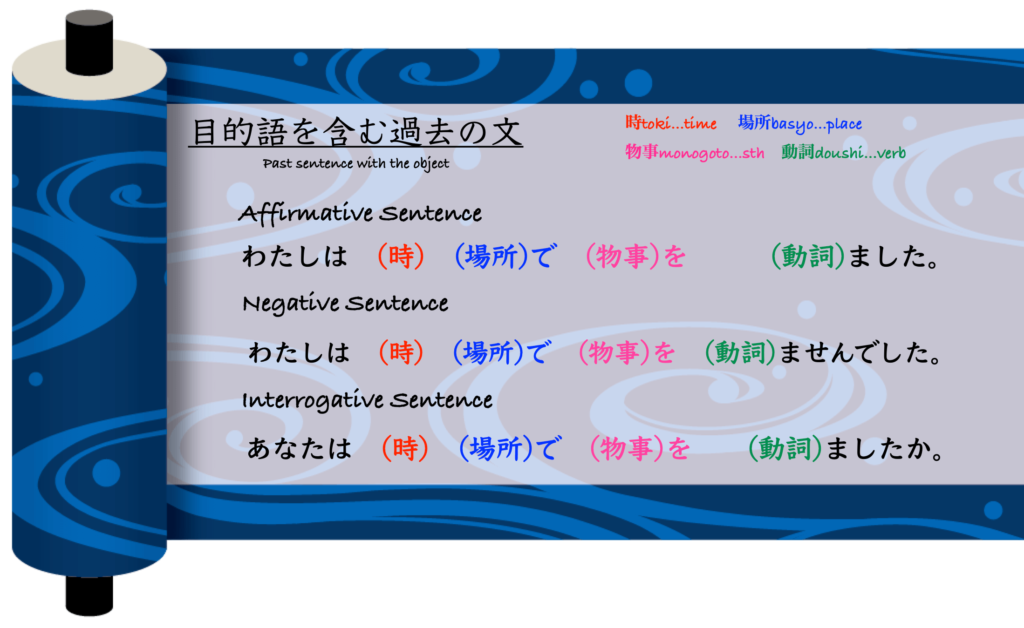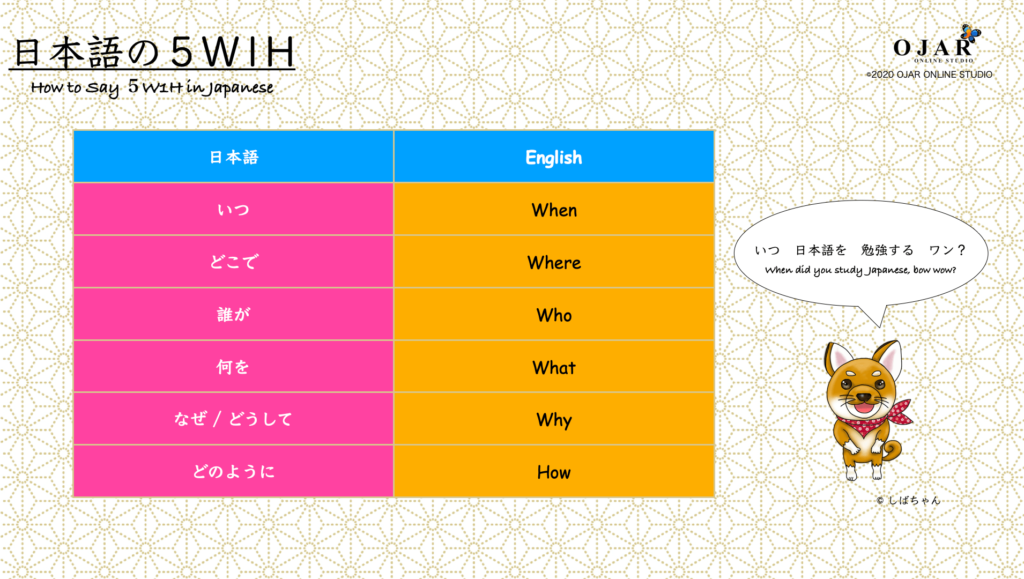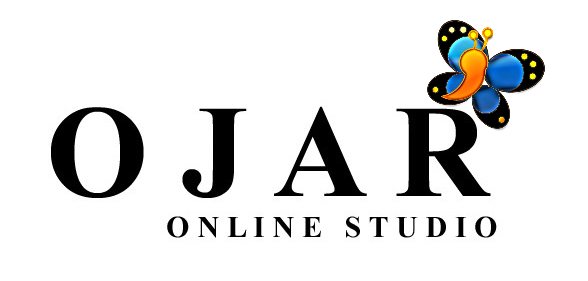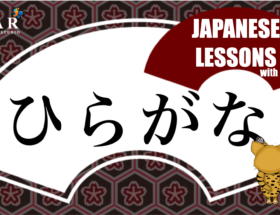Hi, Ojachan here 🙂 Today’s lesson is;【第6課】 Lesson 6. Anata wa Nani wo Tabemashitaka
Don’t you want to know how to learn Japanese like Japanese kids? This lesson is meant for students that are beginners at Japanese.
⭐️This lesson is following the textbook “Minna no Nihongo”. (*not perfectly)
⭐️I’m going to give a lesson easier to understand for Japanese learners without following textbook’s orders.
Let’s get started!
CONTENTS
Past Sentence
■Review
When you make “past sentences“, you just add “ました” the end of the sentence.
| 【present / future tense】わたしは お寿司を 食べます。 【past tense】わたしは お寿司を 食べました。 |

| 【Affirmative Sentence】 わたしは 昨日 レストランで お寿司を 食べました。 watashi wa kino restoran de osushi wo tabemashita I ate sushi at the restaurant yesterday. 【Negative Sentence】 わたしは 昨日 レストランで お寿司を 食べませんでした。 watashi wa kinou restoran de osushi wo tabemasendeshita I didn’t eat sushi at the restaurant yesterday. 【Interrogative Sentence】 あなたは 昨日 レストランで お寿司を 食べましたか。 anata wa kino restoran de osushi wo tabemashitaka Did you eat sushi at the restaurant yesterday? |
5W1H in Japanese

You can expand your Japanese expression a lot if you learn this lesson.
You can talk your experience in Japanese, write a diary in Japanese and ask and answer the questions with your Japanese friends too!
Japanese elementary students learn these words as 5W1H「いつ、どこで、誰が、何を、なぜ、どうした」to write a composition in Japanese class.
⭐️ You should put the word which is related the point of the question before the verb when you answer the question.
1. いつ itsu When
You can use this word as “when” instead of the time.
| いつ ミラーさんと 会いましたか。 itsu miller san to aimashitaka When did you see Miller? 先週 会いました。 senshuu aimashita I saw him last week. |
2. どこ doko Where
You can use this word as “where” instead of the place.
| どこに 行きましたか。 dokoni ikimashitaka Where did you go? レストランに 行きました。 restoran ni ikimashita I went to the restaurant with my friend. |
3. 誰 dare Who
You can use this word as “who” instead of the person.
| 誰が 飲み会に 誘いましたか。 dare ga nomikai ni sasoimashitaka Who invited to a drinking party? 佐藤さんが 誘いました。 satou san ga sasoimashita Sato did. |
4. 何 nani / nan What
You can use this word as “what” instead of objects or things.
However, there are two different way to pronunciations of 何.
①なに nani
1) なに is used a single. So it is often used with “助詞 joshi (participle)”.
| 【なに+助詞】 なにを when you ask the object as what なにが when you ask the subject as what なにに to be what |
2) 何 is usually pronounced as なに which means “what”.
You can use なに if you want to ask objects or things.
| あなたは 何を 食べましたか。 anagata wa nani wo tabemashitaka What did you eat? わたしは お寿司を 食べました。 watashi wa osushiwo tabemashita I eat sushi. |
3) なに is used as “which” or “what kind of~”.
| 何人 nanijin which nationality 何語 nanigo What kind of language 何色 naniiro What kind of color × なんじん なんご なんいろ |
②なん nan
なん is always added with something.
You can use it with something as a compound word if you use なん.
1) なん is used following てとのでだ and です.
| なんて how to say / express (casual) なんと how to say / express (formal) なんの what ~ なんで why なんだ。what is ~?(casual) なんですか。What is ~?(polite) |
2) 何 is often pronounced as なん which means “how” or “what sth”.
When you pronounce it as なん, you can ask “the detail” of that like;
| あなたは 何の お寿司を 食べましたか。 anata wa nanno osushi wo tabemashitaka What sushi did you eat? わたしは 鮭の お寿司を 食べました。 watashi wa sakeno osushi wo tabemashita I eat a sushi of salmon. |
3) You can use it as “How many” with a noun.
| 何人 nannin How many people 何カ国語 nankagokugo How many language 何色 nanshoku How many color You see, those words same as above kanji words but it’s totally different meanings because of the pronunciations! |
5. なぜ /どうして naze Why
You can use this word as “why” instead of the reason.
なぜ is a formal expression. どうして is a casual expression.
⭐️ In conversation, you should use どうして better than なぜ because the sound is more natural.
| どうして ミラーさんは 何も 食べませんでしたか。 doushite miller san wa nanimo tabemasendeshitaka Why didn’t Miller eat anything? その時 体調が 悪かった からです。 sonotoki taichouga warukatta karadesu Because he felt bad at that time. |
6. どのように donoyouni How
You can use this word as “how” instead of the way.
どのように is a fomal expression. どうやって is a casual expression.
| どうやって 病院に 行きましたか。 douyatte byouin ni ikimashitaka How did Miller go to the hospital? タクシーで そこに 行きました。 takushii de sokoni ikimashita He went there by a taxi. |
Vocabulary Words
| 日本語 | pronunciation | English |
|---|---|---|
| 食事会 | shokujikai | a party |
| 昼食会 | chuushokukai | a lunch party |
| 夕食会 | yuushokukai | a dinner party |
| 飲み会 | nomikai | a drinking party |
| 宴会 | enkai | a banquet / a party |
| 歓迎会 | kangeikai | a welcome party |
| 送別会 | soubetsukai | a farewell party |
| 新年会 | shinnenkai | a new year’s party |
| 忘年会 | bounenkai | a year-end party |
| 誕生会 | tanjoukai | a birthday party |
| 女子会 | joshikai | a kitty party |
| 打ち上げ | uchiage | wrap-up party |
Expressions Verbs
| 辞書形 jisho-kei | ます形 masu-kei | ました形 machina-kei |
|---|---|---|
| 食べる taberu to eat | 食べます tabemasu eat | 食べました tabemashita ate |
| 飲む nomu to drink | 飲みます nomimasu drink | 飲みました nomimashita drank |
| 切る kiru to cut | 切ります kirimasu cut | 切りました kirimashita cut |
| 見る miru to see | 見ます mimasu see | 見ました mimashita saw |
| 聞く kiku to listen | 聞きます kikimasu listen | 聞きました kikimashita listened |
| 言う iu to say | 言います iimasu say | 言いました iimashita said |
| 読む yomu to read | 読みます yomimasu read | 読みました yomimashita read |
| 書く kaku to write | 書きます kakimasu write | 書きました kakimashita wrote |
| 撮る toru to take | 撮ります torimasu take | 撮りました torimashita took |
| 会う au to meet | 会います aimasu meet | 会いました aimashita met |
Let’s Practice
Your Homework
✏️Answer these questions in Japanese and comment below.
| ① 昨日 何を 食べましたか。 |
| ② どこで 食べましたか。 |
Okay, that’s all for today!
Good luck with your Japanese study 😉
| Amazon Reviews: | ★★★★★ |
|---|
Publisher:3 A corporation (2nd Edition)
P.S. My English skill is not enough yet. Please correct me with DM from CONTACT if my English is wrong. Thank you for your cooperation!
Next Lesson is;
Minna no Nihongo 17: Watashi wa Nihongo wo Benkyoushimasu
Previous Lesson is; CLICK HERE!
Minna no Nihongo 15: Chiba ni Ikimasenka










